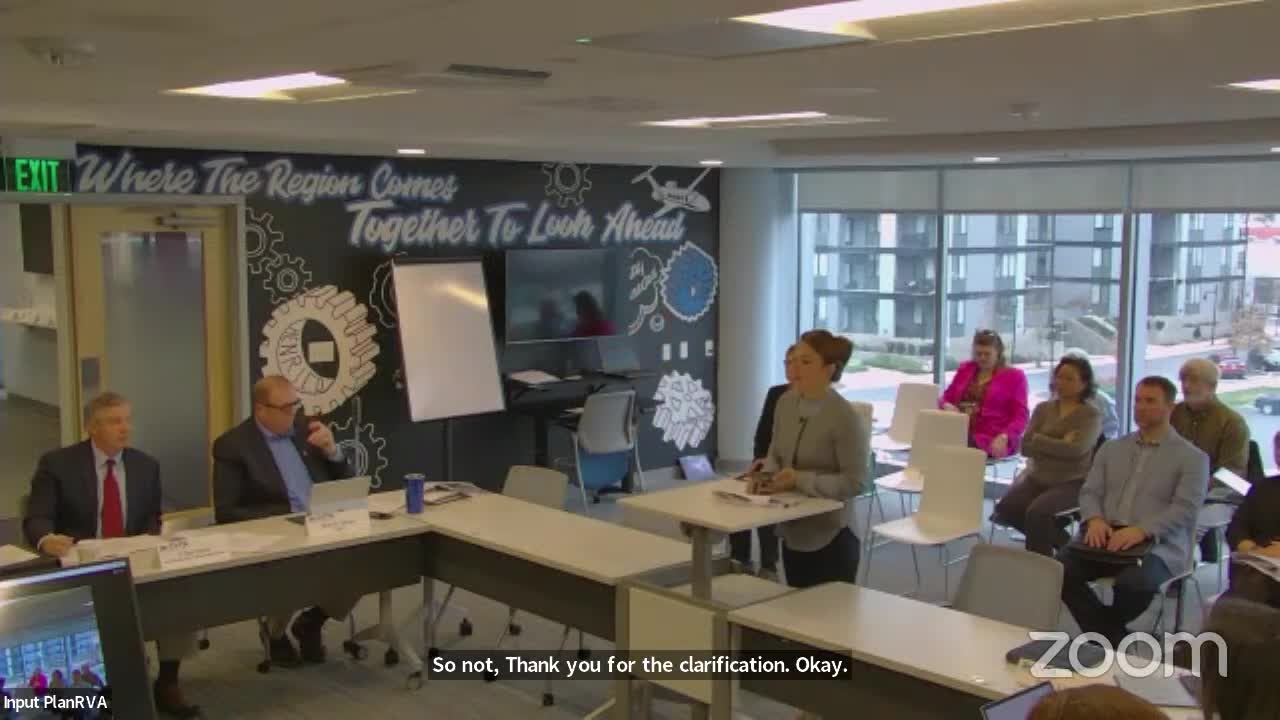Grama Montrose urges attention to environmental justice in Henrico traffic project debate
February 24, 2024 | Central Virginia Transportation Authority, Boards and Commissions, Executive, Virginia

This article was created by AI summarizing key points discussed. AI makes mistakes, so for full details and context, please refer to the video of the full meeting. Please report any errors so we can fix them. Report an error »

The Central Virginia Transportation Authority (CVTA) convened on February 23, 2024, to discuss critical transportation projects impacting local communities, particularly focusing on the Montrose area. The meeting highlighted significant concerns regarding environmental justice and community health, as voiced by Grama Montrose, a resident of the Montrose community.
Montrose emphasized the implications of the Virginia Environmental Justice Act, which aims to promote environmental justice across the Commonwealth. She pointed out that Montrose, alongside the historically affected Fulton community, has faced severe environmental challenges, including high cancer risks from air pollution exacerbated by increased traffic from proposed transportation projects. Montrose criticized the plan to expedite traffic through her community, likening it to outdated urban planning strategies that neglect the needs of vulnerable populations.
In response, Supervisor Shay Nelson clarified that the proposed project would not involve expanding to four lanes, as previously suggested. He assured attendees that the plan would maintain a two-lane configuration with a turn lane, aimed at alleviating congestion while providing safer access routes into and out of Richmond. Nelson emphasized that the project is not about promoting urban sprawl or new housing developments but rather about improving traffic flow and safety.
Stuart Schwartz, a board member of the Partnership for Smart Growth, also contributed to the discussion, advocating for sustainable growth patterns that prioritize revitalization and inclusivity in urban planning. Schwartz's organization supports the development of mixed-use, walkable communities while preserving natural landscapes.
The meeting underscored the tension between transportation development and environmental justice, with community members urging decision-makers to consider the long-term impacts of their plans. As the CVTA moves forward, the discussions reflect a growing awareness of the need for equitable transportation solutions that address the historical injustices faced by marginalized communities. The authority's next steps will be crucial in determining how these concerns are integrated into future transportation initiatives.
Montrose emphasized the implications of the Virginia Environmental Justice Act, which aims to promote environmental justice across the Commonwealth. She pointed out that Montrose, alongside the historically affected Fulton community, has faced severe environmental challenges, including high cancer risks from air pollution exacerbated by increased traffic from proposed transportation projects. Montrose criticized the plan to expedite traffic through her community, likening it to outdated urban planning strategies that neglect the needs of vulnerable populations.
In response, Supervisor Shay Nelson clarified that the proposed project would not involve expanding to four lanes, as previously suggested. He assured attendees that the plan would maintain a two-lane configuration with a turn lane, aimed at alleviating congestion while providing safer access routes into and out of Richmond. Nelson emphasized that the project is not about promoting urban sprawl or new housing developments but rather about improving traffic flow and safety.
Stuart Schwartz, a board member of the Partnership for Smart Growth, also contributed to the discussion, advocating for sustainable growth patterns that prioritize revitalization and inclusivity in urban planning. Schwartz's organization supports the development of mixed-use, walkable communities while preserving natural landscapes.
The meeting underscored the tension between transportation development and environmental justice, with community members urging decision-makers to consider the long-term impacts of their plans. As the CVTA moves forward, the discussions reflect a growing awareness of the need for equitable transportation solutions that address the historical injustices faced by marginalized communities. The authority's next steps will be crucial in determining how these concerns are integrated into future transportation initiatives.
View full meeting
This article is based on a recent meeting—watch the full video and explore the complete transcript for deeper insights into the discussion.
View full meeting
